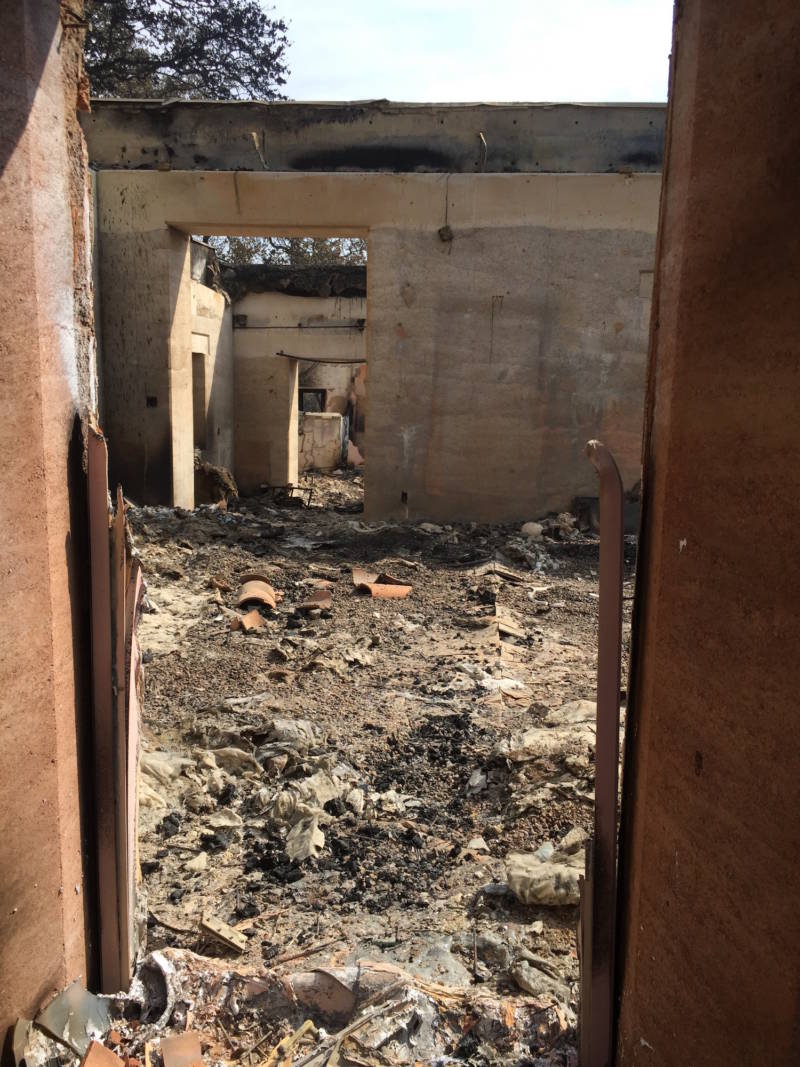Wine Country Fires Were Fanned by 'Unprecedented' Winds
Checking the data coming in from weather stations near where wildfires exploded across the North Bay, Cliff Mass watched in astonishment from his office in Seattle.
"The wind speeds were unprecedented," recalls Mass, an atmospheric scientist at the University of Washington. "That's what got my attention."
Starting on a ridge above Napa Valley on the evening of Sunday, Oct. 8 the historic fires quickly hopscotched their way west, ultimately scorching more than 200,000 acres, including nearly a third of Sonoma Valley.
Mass says one gust on a mountain peak near Geyserville clocked in at 96 mph — another at 108. At times — after the fires had broken out — sustained winds at some higher elevations were at hurricane force.
"We had wind speeds that were higher than ever recorded at those stations," says Mass. "And that's irrespective of season — including the middle of the winter when we have big storms coming in."
Mass writes in detail about the unusual winds in his widely-read weather and climate blog.
It started with warm, dry northeasterly winds, known as Diablos, typical for this time of year. Wind is created when air is pulled from an area of high pressure to low pressure. The bigger the difference, the more powerful the pull. When winds descend down mountains, they pick up speed…and heat, and usually trigger red-flag warnings [for fire potential].
"But then something happened locally, " notes Mass. There followed what he calls "Diablo-plus."
"The strong winds coming in against the mountains accelerated further," he explains. "It was an interaction between the winds and the mountains. You not only had the largest-scale Diablo wind but the winds further accelerated as they interacted with the mountains."
It's one reason so many were caught off guard. Kat Krause lost her home in Glen Ellen in a matter of minutes. She was still gathering things for a possible evacuation when she recalls hearing her husband, who was watching the hillside above their home yell, "Get out now!"

"All at once while I was watching, that hill, from top to bottom and side to side, was spontaneously combusting into red, rapid lava-like fire which was moving toward us" Krause recalls."From the time he yelled, "Now," to the time I saw that hill explode in flames was no time at all — it wasn't even seconds. "
As Mass describes it, "This fire exploded, and it exploded in a number of places at once."
The force behind this is what meteorologists call a mountain wave or downslope wind storm, this one complicated by the terrain.
"There was a tremendous amt of variability of the winds, recalls Mass. "We had these localized areas, near the crest and downstream and down the slopes a bit on some of these mountains, where the winds accelerated to unprecedented speeds."
"Not only are you getting standard accelerated wind or Diablo wind, you're also getting fire-induced winds around the fire front," describes Craig Clements, who runs the Fire Weather Laboratory at San Jose State University. "You're getting all sorts of squirrely wind circulations around the fire,"
Last week he dispatched the lab's mobile unit to Santa Rosa, shooting Lidar beams into the smoke. Lidar is like the Doppler radar used by local weathercasters, but uses light beams instead of radio waves to study the dynamics in and around the fire.
In classic large wildfires, a towering smoke plume often rises, spewing firebrands from the top, transported by upper-level winds sometimes miles. But these fires were different.
"What happened here, you had embers blowing in the near-surface winds into housing communities, and then one house would ignite, and then the next house would ignite, so it was unique."
The tragic result was a number of lost properties more than double that of the Oakland Hills firestorm in 1991, which had held the record.
"I think this was just everything coming together in the wrong way," reflects Mass, "and gave us an unprecedented catastrophic event. "
__._,_.___

No comments:
Post a Comment